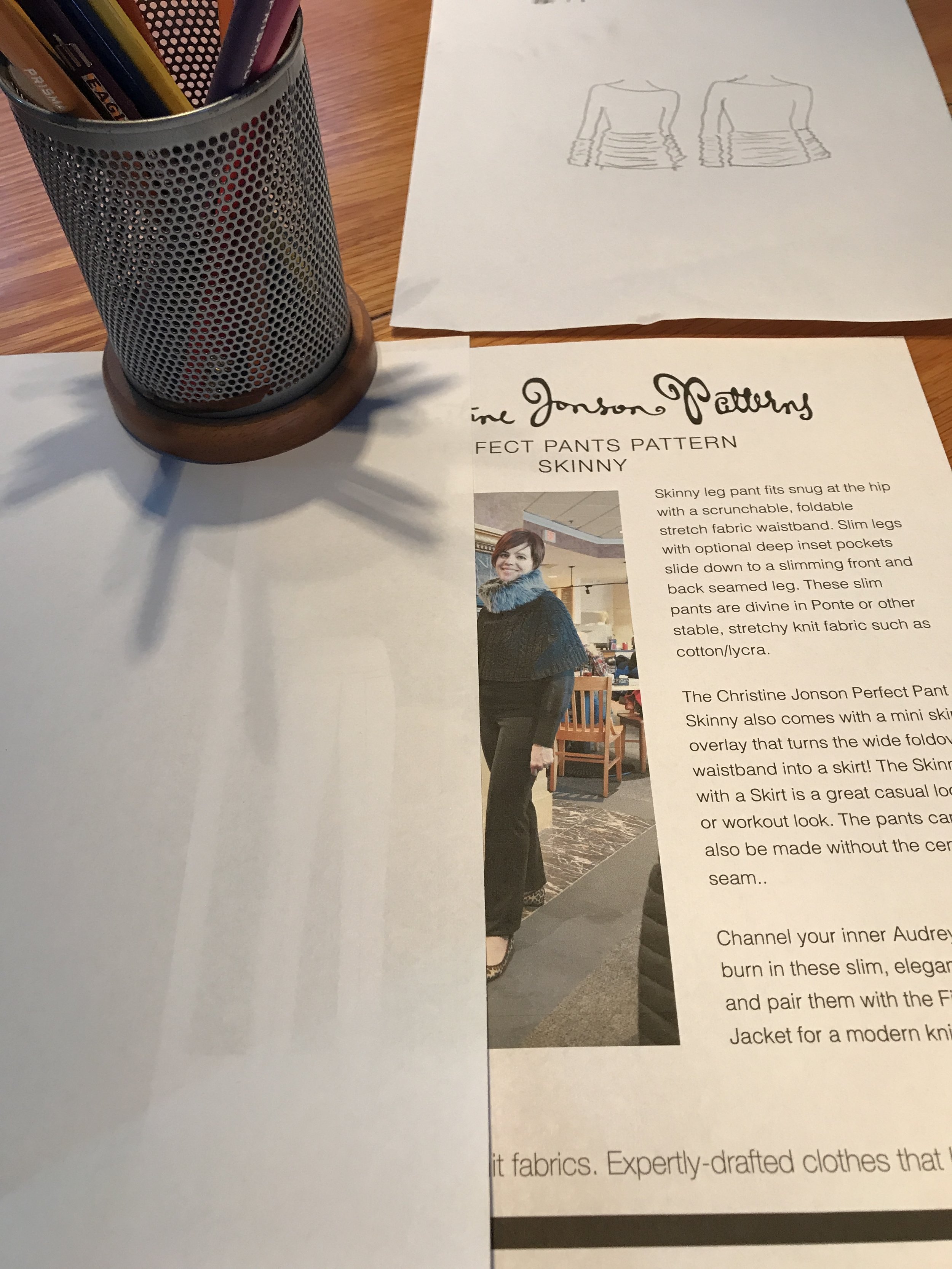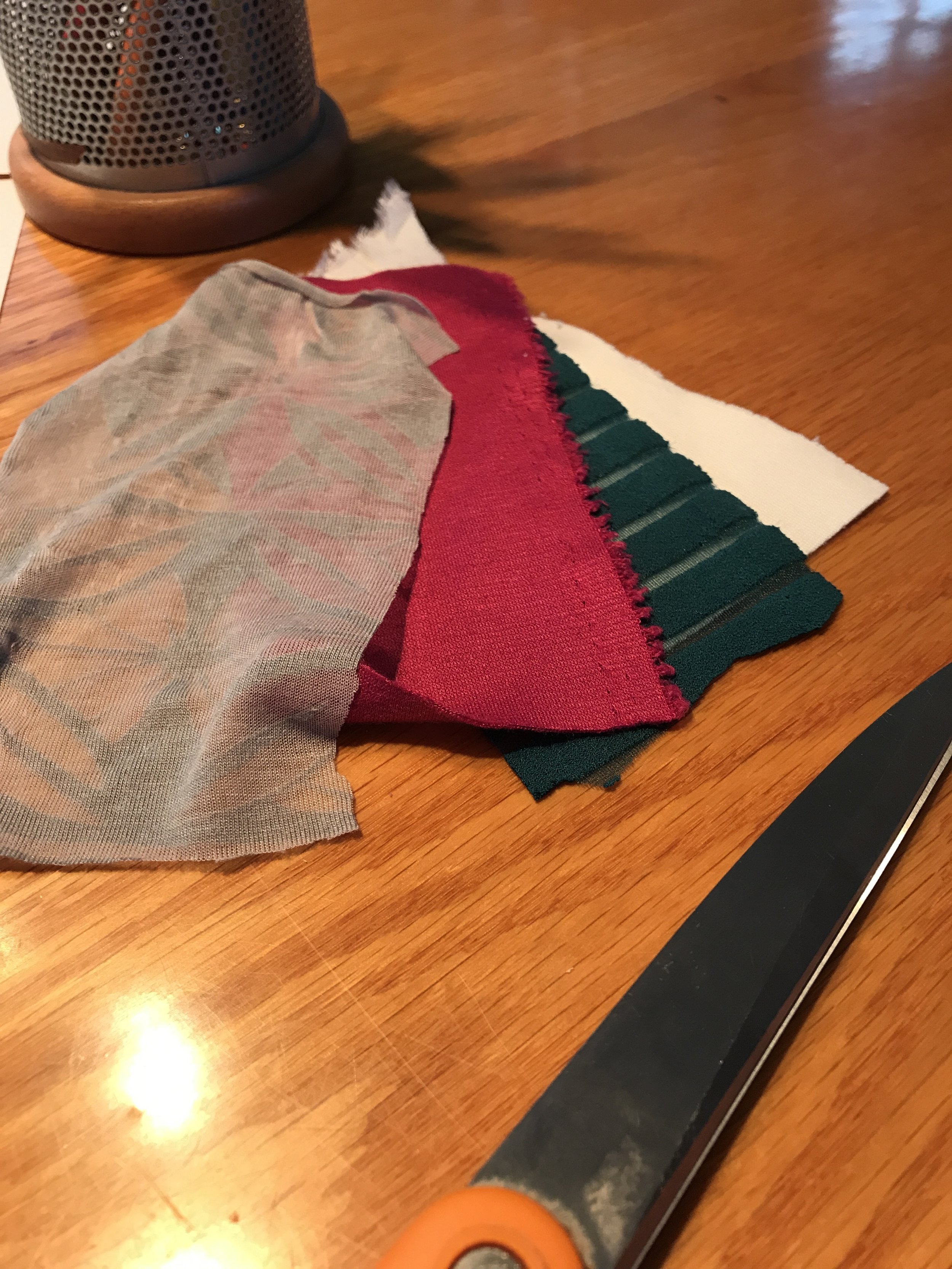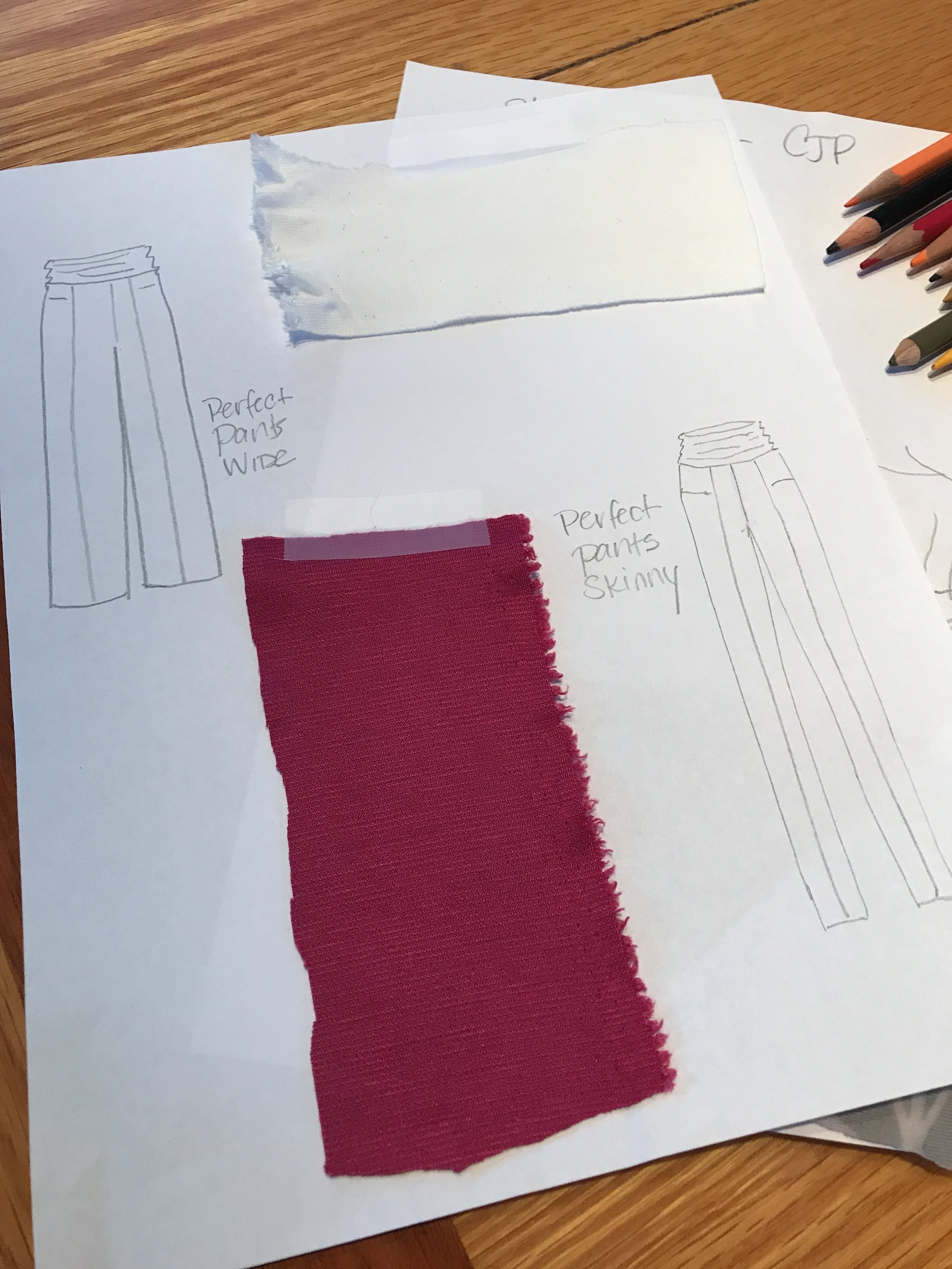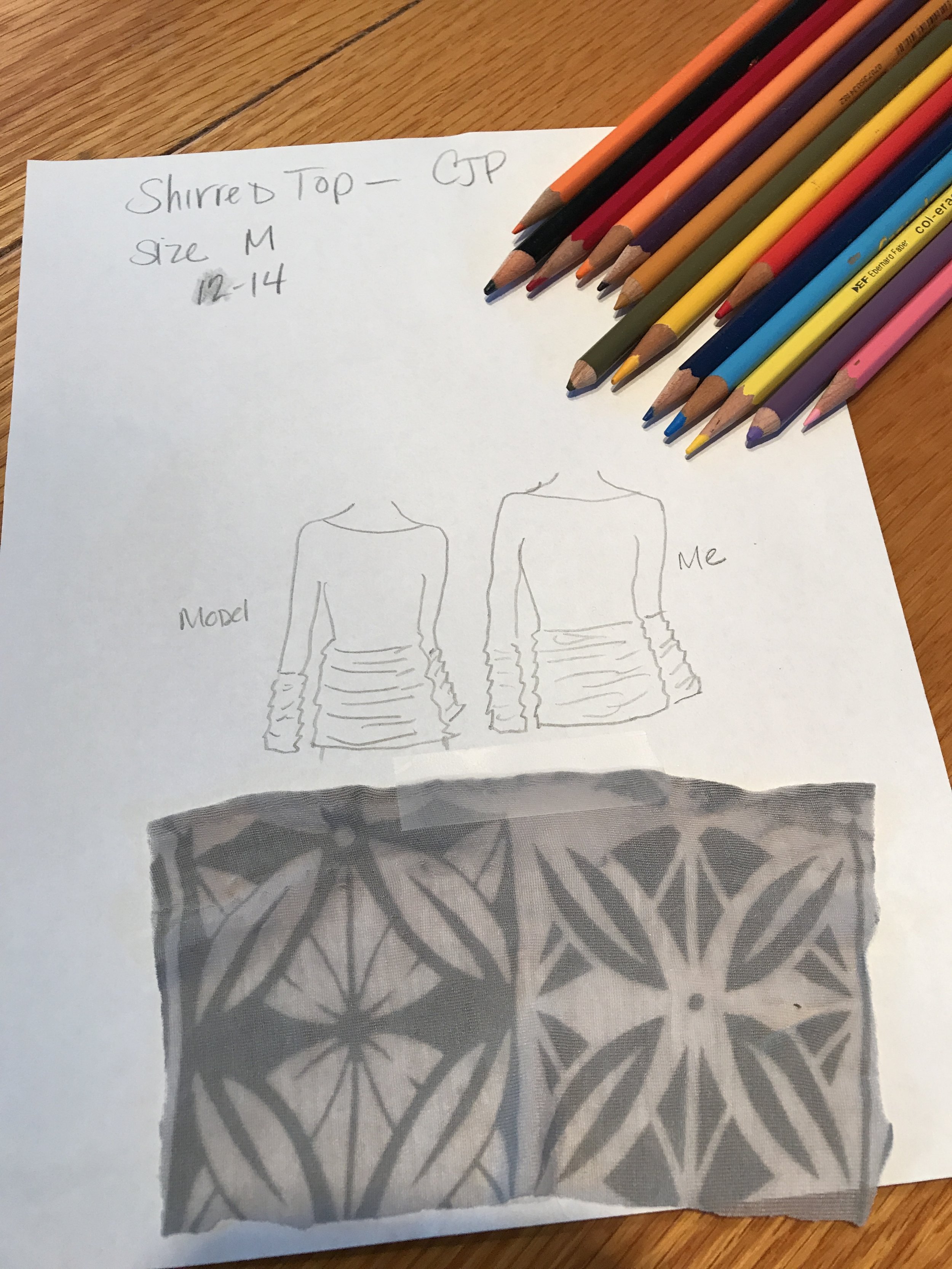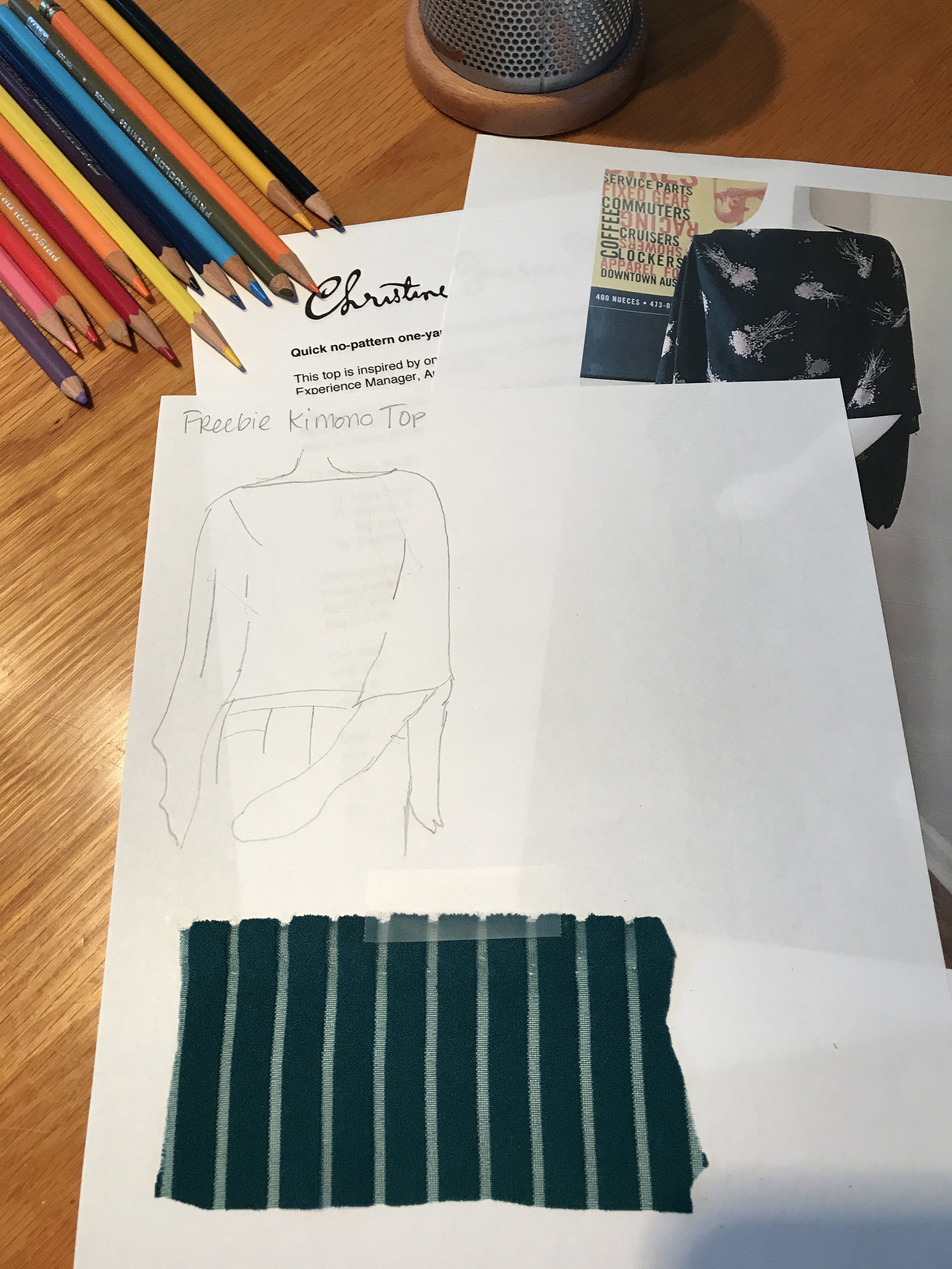Pick One Make Two: A Fast Approach to Sewing a Capsule Wardrobe
By Ann Siegle, Christine Jonson Patterns
Ever stand in your closet each morning and think ‘I have nothing to wear?’ If not, please call us, we would love to know your secret! Seriously, most women have far too many individual clothes and not enough wardrobe. Sewing a wardrobe requires you to look at your wardobe, not just your fabric stash.
The cowl neck tunic makes a fabulous mini dress (worn backwards, here.) Black builds the base of your wardrobe. Layer up with Leggings 622 and the Drape Vest & Jacket.
Threads Magazine (June/July 2011) ran a wonderful using Christine’s unique approach to wardrobe building. I you’re sewing a capsule wardrobe from scratch, that’s a great article and method for creatively thinking about wardrobe building. You can get back issues from Threads magazine.
Here’s another way to kickstart your wardrobe:
Pick One, Make Two:
Ideally, you will have a top, bottom, and a jacket as a complete outfit. A dress counts as a top and a bottom together.
If it’s warm where you are, your ‘jacket’ might be a vest or even accessories. It’s the combination of a final polishing layer that makes an outfit, so don’t ignore the third piece (it doesn’t have to be clothing if it’s 100 degrees in the shade!) In the winter, it might be a ruana, or wrap. It might even be a big scarf!
Select one item from your closet that you like that fit you well, that you have not worn in the past 30 days. They might be a top and a jacket, or a top and bottom (skirt or pants), or two bottoms (skirt AND pants.) or even an accessory and a bottom or top.
Take that item over to your fabric stash. Hold them up to the fabric you see in your stash
Stash management: Christine has hers on rolls in the studio, you might have yours folded or rolled on shelves; this is the optimum way to display a stash as you can see what you have.
Ann, our sewing marketer, bought an inexpensive bookshelf with doors from the home store and folds and rolls her fabric and places them so each roll’s front is visible. The doors keep dust off the fabric.
If you do use bins, folding then rolling them into short tubes the height of your bins and having the short tube ends showing helps as you can then open a bin lid and see all the fabric in the bin. Stacking fabric on top of one another in a closed container means you need to dig to see what you have, and it’s easy to forget you have 9 cuts of black ITY knit in your stash.
Select two or three fabrics that you like that coordinate (they do not have to match, only coordinate, e.g. brown looks great with blues, pinks and burgundies, blues look great with coral and lime, grays get punch from reds and sophisticated black goes with everything.)
Take these coordinating fabrics to your pattern stash. There are a lot of ways to organize patterns. Our Sewing Marketer, Ann, keeps large 5” D ring binders organized by garment type (top, skirt, separates.) You might have yours in file cabinet drawers, with similar labels.
If you have a jacket or top and need a bottom, go to skirts and pants. And don’t forget your separates section too, pants and skirts from those separates, such as the Christine Jonson Travel Trio series, are wonderful companions to your closet items as single garments, too.
Select two patterns that might work with your outfit. Evaluate them against your fabric selections and your garment.
Look at proportion – a boyfriend jacket works with a slim pencil skirt or slim pants, not an A-line skirt. But an A-line skirt, looks wonderful with a fitted top or fitted jacket. A dress might need a shorter jacket, if it’s a longer, fuller dress. If it’s a short, slim fitting dress, a longer, looser jacket will work well.
Create at least two combinations with your two closet items and the pattern/fabric combos.
The hardest part is picking just two items to sew. The inspiration that comes out of this process does the following:
Gets you to think outside the box of your pattern stash and fabric stash
It forces you to evaluate the items in your closet first, and on a regular basis. If it doesn’t fit or you don’t like it, it shouldn’t be there
It allows you to take a garment from your closet that you love but haven’t worn AND utilize it more
Stimulates your creativity and desire to sew!
You can add new capsules that coordinate with this one by picking one item from THIS capsule to start your next one
Above: From sketch to swatch, here's how we plan our capsule wardrobe!
How to fashion sketch when you're not an artist:
Back in design school in the 1980s, I had a professor who said "tracing is the advertising designer's secret!" Back when we drew most of our illustrated artwork by hand (or used photography), I learned the art of tracing. To trace a fashion illustration to your size is pretty easy. You'll need tracing paper, OR a bright window. If you use a window, you'll be holding up the pattern envelope or printed cover and a piece of standard office paper over it.
Trace the left side of the garment's fashion illustration or technical sketch
Slide your paper over a bit to the right to create 'space' - the relative distance between the left and right halves that you think that your body most closely represents
Trace the right half of your fashion illustration or technical sketch
Create connectors at the hem and neckline (note, you may want to ANGLE your trace so your 'neckline' doesn't get bigger, but your body area of the drawing does.
In our video (shown live on Facebook in November 2017), you'll see how we plan our capsule wardrobe and what garments from the closet we have selected them to pair with:
Go forth, right now! Take your tablet / iPad with you with this article open to your closet and follow along!
With these easy steps, you’ll expand your wardrobe's potential in no time!


